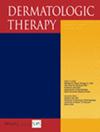The Combination of Serum Total IgE and Blood Eosinophil Levels as a Predictor of Response to Phototherapy Treatment in Patients with Atopic Dermatitis
IF 3.7
4区 医学
Q1 DERMATOLOGY
引用次数: 0
Abstract
Atopic dermatitis (AD) is the most common chronic inflammatory skin disease affecting approximately 25% of all people worldwide at some point during their lifetime. Although total serum immunoglobulin E (IgE) and blood eosinophil levels are not elevated in all patients with AD, they have been shown associated with AD severity. This study aimed to investigate whether IgE and blood eosinophil levels correlate with the response to phototherapy treatment, which is a second-line treatment for moderate-to-severe AD, and therefore could be considered a readily available and reliable biomarker that could guide patient management. Eighty-two patients with AD who received phototherapy at the Sheba Medical Center were retrospectively evaluated for the following: demographic characteristics, serum IgE levels, blood eosinophils count, hospitalization duration, response to phototherapy, and requirement for systemic treatment. Response to phototherapy treatment was assessed by comparing the pre- and post-treatment Investigator’s Global Assessment score for each patient in relation to the aforementioned factors. The total IgE and eosinophil levels were found to be significantly higher in patients who did not respond to phototherapy ( p = 0.018 and p = 0.002 , accordingly). Serum values of 1780 IU/mL for IgE and 225.0 cells/μL for eosinophils showed maximum sensitivity and specificity as predictive values for treatment response. In conclusion, this study found that high total serum IgE levels and eosinophilia were correlated with a low response to phototherapy. These results suggest that escalating treatment is recommended for patients presenting these clinical features.血清总IgE和血嗜酸性粒细胞水平联合预测特应性皮炎患者对光疗治疗的反应
特应性皮炎(AD)是最常见的慢性炎症性皮肤病,在全世界约25%的人一生中的某个时候都会受到影响。尽管并非所有AD患者的血清总免疫球蛋白E(IgE)和血液嗜酸性粒细胞水平都升高,但它们已被证明与AD的严重程度有关。这项研究旨在调查IgE和血液嗜酸性粒细胞水平是否与光疗治疗的反应相关,光疗治疗是中重度AD的二线治疗,因此可以被认为是一种现成且可靠的生物标志物,可以指导患者管理。对在Sheba医疗中心接受光疗的82名AD患者进行了以下方面的回顾性评估:人口统计学特征、血清IgE水平、血液嗜酸性粒细胞计数、住院时间、对光疗的反应以及全身治疗的要求。通过比较每位患者治疗前和治疗后研究者的全球评估评分与上述因素的关系来评估对光疗治疗的反应。在对光疗没有反应的患者中,总IgE和嗜酸性粒细胞水平显著较高(相应地,p=0.018和p=0.002)。血清值1780 IgE和225.0的IU/mL 嗜酸性粒细胞的细胞数/μL显示出最大的敏感性和特异性作为治疗反应的预测值。总之,本研究发现,高血清总IgE水平和嗜酸性粒细胞增多与对光疗的低反应相关。这些结果表明,建议对出现这些临床特征的患者进行升级治疗。
本文章由计算机程序翻译,如有差异,请以英文原文为准。
求助全文
约1分钟内获得全文
求助全文
来源期刊

Dermatologic Therapy
医学-皮肤病学
CiteScore
7.00
自引率
8.30%
发文量
711
审稿时长
3 months
期刊介绍:
Dermatologic Therapy has been created to fill an important void in the dermatologic literature: the lack of a readily available source of up-to-date information on the treatment of specific cutaneous diseases and the practical application of specific treatment modalities. Each issue of the journal consists of a series of scholarly review articles written by leaders in dermatology in which they describe, in very specific terms, how they treat particular cutaneous diseases and how they use specific therapeutic agents. The information contained in each issue is so practical and detailed that the reader should be able to directly apply various treatment approaches to daily clinical situations. Because of the specific and practical nature of this publication, Dermatologic Therapy not only serves as a readily available resource for the day-to-day treatment of patients, but also as an evolving therapeutic textbook for the treatment of dermatologic diseases.
 求助内容:
求助内容: 应助结果提醒方式:
应助结果提醒方式:


